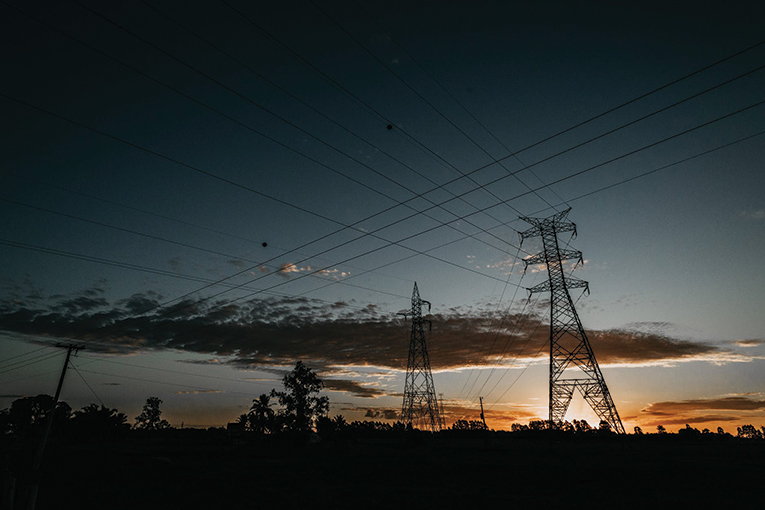5G is all the buzz in telecommunications and even everyday life these days. People are wondering when it will be available, and the telecommunications providers market it as the answer to everyone’s communications problems. At the same time, mission-critical industries such as utilities, oil & gas, rail and others have been forced to operate with limited amounts of radio frequency (RF) spectrum or purchase larger amounts in the secondary market from spectrum speculators. Some have had to move to commercial networks, whether they be 3G, 4G, or possibly 5G, depending on the area in which they operate.
While 5G’s marketing materials promise previously unheard of wireless speeds and connectivity, the reality is that those connectivity speeds will be available only in urban areas and in areas that are quite close to their access point or base station. 5G, at least in the United States, is based on millimeter wave technology at extremely high frequencies, which means the radio waves do not propagate very far, and range is limited. 5G is currently intended to be deployed as base stations or access points installed on distribution power poles or light poles within urban environments. (See Figure 1).

Figure 1
For many years, mission-critical industries have been reluctant to use commercial wireless networks for mission-critical data and control. Commercial networks do not provide the levels of availability, reliability, low latency and security that are required for these very mission-critical applications. 5G does nothing to solve these issues, and for most of these issues, it actually makes them worse.
To begin with, 5G will have lower availability. Currently, commercial networks typically install their base stations or access points on tower sites. These tower sites have buildings or larger concrete pads in some cases, and most have battery banks that will provide at least four to eight hours of backup power in the case of a power outage. With 5G access points being installed on a light pole or distribution power pole, there is no place, nor is it cost-effective, to install a battery plant. When there is a power outage, those access points will go off-line, and 5G will be unavailable in that area.
Reliability will also be lower as 5G will not be ubiquitous and will take a long time to deploy. As previously mentioned, coverage from each access point will be much smaller than 4G and 3G coverage, due to the high frequencies used. Additionally, the base stations installed on poles will require fiber going to them to provide backhaul connectivity to the network. This is a costly and time-consuming endeavor, and only the most populated locations will have 5G coverage initially. After decades of commercial cellular deployment, some places in the United States have only 4G, 3G, or no coverage at all. 5G will not be coming to those areas, at least not for a long time. It is just not cost-effective, nor is 5G in the business plans for commercial carriers.
Lower-latency has been touted as improving significantly with 5G deployments. Providers are reporting overall latencies of 30 ms with air latencies as low 8 to 12 ms. 4G networks have latencies around 50 ms, so the improvement is significant if those reports are accurate. While latency that low is definitely an improvement and may be able to provide the latency required for many control applications, it is still not low enough for many transmission teleprotection applications. However, this is one area that 5G, if reality does meet promises, has made significant gains.
Security is a great concern and a grave danger to networks that are used for such critical communications as serving the electrical grid. By using a commercial network that is accessible using the same technology that literally everyone in the world has access to, electric utilities open themselves to great risk of a security breach. While security breaches are common and unfortunate, people’s financial data is accessed, or their devices or networks are hacked into, the risk for the electric grid is much more significant. Because the electric grid is tied together into three major grids (the eastern grid, the western grid and the Texas grid), the risk of wide-spread blackouts is great if an intruder – whether that be a nation-state actor, a disgruntled employee, a hacker or a teenager playing around – breaks in. Commercial providers will tell you that they are secure because the technology is so wide-spread that their level of security is quite high. Still, networks will be compromised with wide-spread technology, and that is a threat to mission-critical industries, particularly electric utilities, cannot risk.
5G does not present any further risks than using existing commercial networks, but it also doesn’t alleviate any more risks than existing commercial networks. So, what do electric utilities do? Electric utilities need to continue to use private, licensed, wireless networks as they have done successfully for many decades. This does not mean that all electric utility data needs to go over a private, licensed, wireless network. Private wireless networks have limited bandwidth, and only a utility’s most critical data and control points need to be on a private network. Utilities have much greater data needs that require more bandwidth, but many of these larger data requirements are not as critical and can use commercial networks to augment the increasing demands.
Data that is not mission-critical can use commercial networks, as long as the utility understands the commercial carriers’ availability, reliability, latency and security risks. This is application-specific. It is important to separate a utility’s corporate network from its control network, keep accessibility to a utility’s control network separate from its corporate network, and to keep its control network separate from public, commercial networks. As long as these considerations are taken into account and are adequate for the applications the utility is providing, a commercial network can be a good tool in a utility telecommunications network designer’s toolbox.
For mission-critical data and control, private, licensed wireless networks are still needed. However, there are challenges with that. Utilities typically have access to only narrow channel licenses or slightly wider channel licenses on the secondary market, but not to channel sizes needed to deploy networks that can use common communications standards such as LTE and IEEE 802.16. This puts utilities into a quandary because they are forced to install proprietary networks which inherently puts their networks at risk. Manufacturers go out of business or discontinue support of product lines, and these narrow channel networks are a small market for many manufacturers. If a manufacturer discontinues support or goes out of business, the utility is left either self-supporting or self-maintaining their network if possible, or forklift upgrading their network to another proprietary solution, which is costly and service disrupting.
LTE’s minimum channel size is 1.4 MHz, and IEEE 802.16’s minimum channel size is 1.25 MHz. Neither of these standard’s smallest channel sizes was usable in spectrum utilities typically have access to. For this reason, a grassroots effort, started by electric utilities in 2015, began work on a revision to IEEE 802.16 to develop a standard that could be used in channel sizes utilities and accessed by other mission-critical industries. At that time, the focus was on spectrum, which could be acquired on the secondary market and, with the technology available at the time, was focused on spectrum down to 100 kHz. In the fall of 2017, IEEE 802.16s was ratified and published by IEEE, and utilities had a usable standard for channel sizes down to 100 kHz. While this was an improvement and was great for utilities that had purchased spectrum on the secondary market, there were many utilities with underutilized or unused private land mobile radio (PLMR) channels or multiple address system (MAS) channels that could be purchased from the FCC for a much lower cost than purchasing spectrum on the secondary market, which may have cost a utility millions of dollars. For this reason, an effort was started in 2019 to create another revision to the IEEE 802.16 standard.
IEEE 802.16t is a new standard revision to the IEEE 802.16 suite of standards whose Project Authorization Request (PAR) was recently approved by the IEEE 802 executive committee. This means a new revision to the IEEE 802.16 standard will be starting in January 2020. The intent of IEEE 802.16t is to go down to narrower channel sizes – as low as 12.5 kHz or less. Additionally, it is intended as part of the standard revision for those small channels to be able to be aggregated together even if they are not adjacent. While that is the initial scope of the standard revision at its outset, now that the standard is open, additional requirements can be brought up by end-users, manufacturers, or anyone else that participates in the IEEE 802.16 standardization process, which is open to anyone.
By using standard technology that is still unknown to the widely connected consumer market, there is an inherent layer of security. Hackers and nation-state actors will be less likely to access a utility’s mission-critical SCADA network. Additionally, security using AES encryption is built into the IEEE 802.16 standard as it currently exists, and as IEEE 802.16t is developed, additional security can be added if required.
While consumers look forward to the coming of 5G networks, electric utilities continue to keep the lights on, which requires networks that do provide the availability, reliability, low latency and security required for their mission-critical applications. IEEE 802.16t is the standard that can deliver. Not only is it important to be aware of the standard, but by actively participating as the standard is being revised, your companies’ requirements can be heard and included.
 Kathy Nelson is the director of technical product marketing and industry relations at Ondas Networks, where she leads Ondas' industry relations and product marketing across all industrial verticals, including electric utilities, oil and gas, water, transportation and government. Nelson has 25 years of experience as a telecommunications engineer in the electric utility industry, focusing primarily on SCADA and land-mobile radio telecommunications systems. She has a B.S. in electrical engineering from North Dakota State University and is a registered professional engineering in Minnesota, Wisconsin and North Dakota.
Kathy Nelson is the director of technical product marketing and industry relations at Ondas Networks, where she leads Ondas' industry relations and product marketing across all industrial verticals, including electric utilities, oil and gas, water, transportation and government. Nelson has 25 years of experience as a telecommunications engineer in the electric utility industry, focusing primarily on SCADA and land-mobile radio telecommunications systems. She has a B.S. in electrical engineering from North Dakota State University and is a registered professional engineering in Minnesota, Wisconsin and North Dakota.






